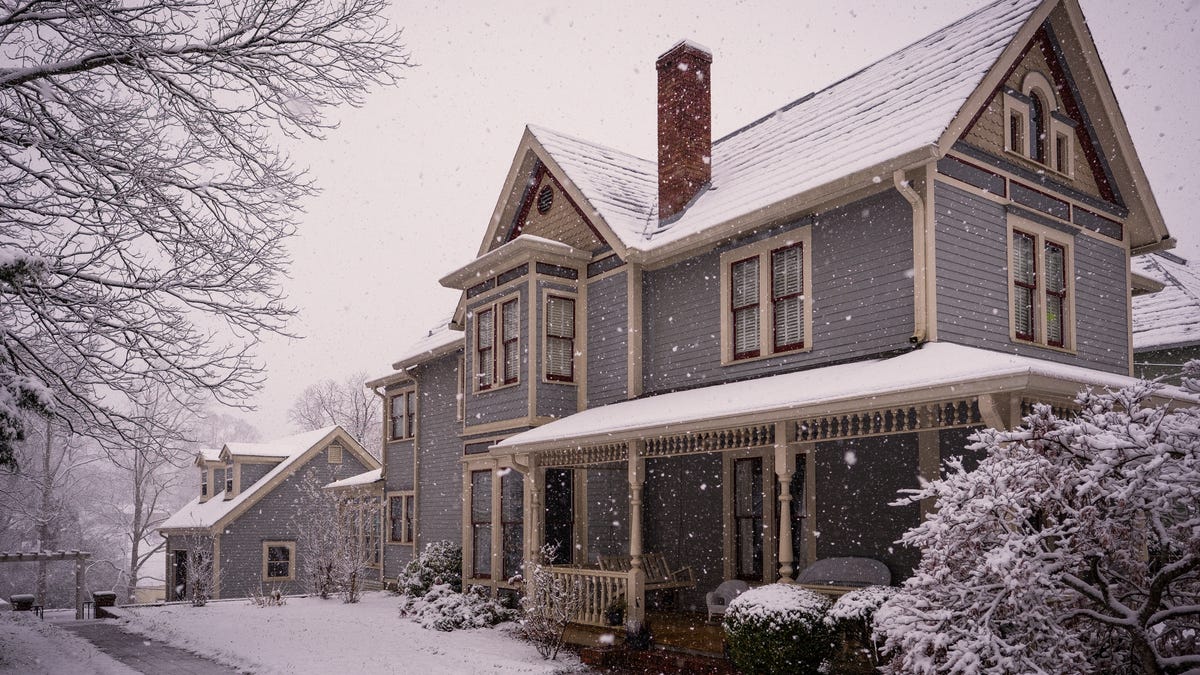 Why You Can Trust CNET
Why You Can Trust CNET Advertiser Disclosure
Climate change is intensifying severe weather. Take these 4 steps to fortify your home
Climate change is causing storms to become more frequent and intense. Your home is your last line of defense.

With increasing storms across the US, is your home really ready?
Nicholas Parrish was sitting on his couch during Texas' winter storm last February, his toddler tucked in bed, his wife in the shower. Suddenly, Parrish heard the sound of gushing water. He immediately knew that one of his pipes had burst.
"I live in East Dallas and earlier this year, my wife, toddler and I experienced definitely the harshest winter I've seen in north Texas or anywhere else for that matter," Parrish told CNET. "In the span of about a week, it went from 50s to 60s to 0."
The Texas winter storm of 2021 left millions without power for weeks and led to dozens of casualties. The economic impact of the storm is estimated to have exceeded $130 billion, according to AccuWeather's data.
Having recently completed a major renovation, Parrish knew where all the pipes were. If he hadn't, the torrent of water would have quickly caused massive amounts of damage -- and exacted a significant financial toll.
"It would've transitioned pretty quickly from a few hundred dollars and hours of my own time into thousands if you have to get a contractor," Parrish said. "And clearly, if you're in a house with the young kid, you can't just wait that long to go without the ability to use your washer and other utilities."
As destructive weather becomes more frequent and severe, a huge part of the damage is the cost. "Catastrophes are getting more expensive," said Mark Friedlander, director of corporate communications at the Insurance Information Institute. The National Oceanic Administration's data shows that there were 20 weather and climate disasters in 2021 that resulted in more than $20 billion in losses.
Find out what you can do to mitigate your financial losses below.
How to prepare for a winter storm
1. Have tools handy and know the layout of your house
A big lesson from Parrish's story is that having the right tools and knowledge of your home's layout can help you manage when a natural disaster heads your way.
In his case, Parrish used a SharkBite product to seal up some of the unusable pipes. "I fixed the pipes such that now the sink in our garage and the washer were inoperable, but it also meant that we could turn water back on for the rest of the house and not have a cascade of water gushing everywhere," Parrish said.
Because Parrish knew where the burst pipes were located, he could quickly turn off the water before it caused more damage. These maneuvers likely saved Parrish thousands of dollars.
The lesson? Orient yourself in your living space. Label your pipes and circuit breakers so that you or someone else knows where and how to shut things off.
You may be able to get the floor plan -- or even the blueprints -- for your house from the original contractor or in your local municipal archives.
2. Buy flood insurance
Standard homeowners insurance covers losses from windstorms and fire, but not flood insurance. That's striking, considering that 90% of natural disasters in the US involve flooding, according to Friedlander.
As such, clean debris out of your drains, gutters and downspouts. And install a sump pump, a device that moves water from your basement out of your home. You can also move your furniture and rugs off the floor if you anticipate that you might get flooded.
Sea surges from hurricanes are a major threat on the coast as those storms "have the ability to impact hundreds of thousands of homes at a single event," according to Tom Larsen, content strategy principal for Insurance and Spatial Solutions at CoreLogic, a data analysis company.
A sump pump may not do the trick against a major surge. You can apply for flood insurance through the National Flood Insurance Program, which is managed by the Federal Emergency Management Agency, or FEMA, and you can purchase it through major national insurers like Allstate, according to Jerry Samson, the Allstate National Catastrophe Team's senior manager of response. The maximum coverage includes $250,000 for structures and $100,000 for personal property. Your state may also offer flood insurance protection, and some private insurance plans offer larger policies, according to Friedlander.
3. Fortify your roof
Roofs are "the first line of defense for wind storms," according to Friedlander. "If your roof blows off or has major holes in it, you're going to have most likely catastrophic damage."
If you live in an area with severe windstorms or hail, you'll want to ensure your roof is secure.
You can make your roof more resilient by strapping it down. A hurricane strap reinforces the connection between the roof and exterior of your home.
If you live in an area with severe windstorms, invest in protective equipment such as wind-rated garage doors and storm shutters.
4. Establish a "defensible space" from wildfires
For wildfires, a recommended mitigation strategy is to establish a defensible space, maintaining a zero to five-foot gap between your home and potential ignition zones. Ignition zones are places where something could, well, ignite, such as mulch or pine straw. "You should put stones or other types of materials that don't burn around your home. Don't use mulch or pine straw if you live in a fire zone," Friedlander said.

